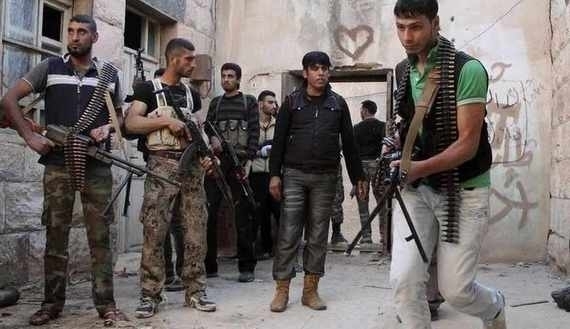Despite radical changes in a number of Syrian areas – particularly the north where efforts are underway to Islamize most military formations – the Syrian south has been least affected by this transformation, where only a number of small extremist formations – including ISIS and the Nusra Front – have emerged, particularly in the countryside of Damascus.
Recent developments in the country’s south were key in changing the influence of the political and military powers in the region, which extends from Qalamoun in the north to Daraa in the south. The beginning of these changes was signaled when Assad's regime – with its allied Iranian and Hezbollah militias – attempted to advance beyond traditional aggressive operations in Daraa, organizing a major military campaign in order to expand the reach of its power, in an attempt to regain strategic areas in Daraa and Quneitra linking Damascus with Jordan and Israel. But the campaign failed, and military formations (mostly affiliated to the Free Syrian Army) launched a counter-attack, resulting in the liberation of Busra Sham and the seizure of the Nasab border crossing with Jordan.
It seems that this transformation motivated the extremist forces to expand their presence in the region (the Nusra Front's attempts in the countryside of Daraa and Quneitra, for example), which required political and military action against them – resulting in attempts at besieging these groups militarily and politically, where Nusra was forced to withdraw from the border area between Syria and Jordan, and from the Nasab border crossing. A break with the Nusra Front and similar organizations was declared by Free Syrian Army formations in Daraa, while military force was used to stop the attempts of al-Muthanna battalion to seize Busra Sham.
Coupled with events in Daraa and Quneitra, including the military and political isolation of armed extremist formations, clashes took place between moderate armed formations and ISIS in Damascus and its environs. The first clashes took place when ISIS attempted to seize the Yarmouk Palestinian refugee camp in the south of Damascus. Free Syrian Army formations then besieged the headquarters of Nusra in Damascus’ north (specifically in Barzeh, Qaboun and Tishreen neighborhoods), where a number of Nusra leaders were killed while the rest were arrested. Simultaneously, clashes between the formations of the Free Syrian Army and ISIS continue in Qalamoun, after ISIS attacked the Free Syrian Army battalions while its troops were fighting regime forces and Hezbollah militants in the region.
These political and military moves summarize the changes in southern Syria in two main points: first, they prevented the expansion of extremist groups in the south. Secondly, they emphasized the path of the revolution, which includes facing extremism and terrorism – whether it comes from Assad and his allies, or from extremist organizations like ISIS and Nusra.
Perhaps it is obvious the essence of the changes in southern Syria show the potential for all liberated areas. These areas should be free of extremist and terrorist forces, whether politically or militarily, and they should be closer to the goals for which the Syrian revolution is based.
Translated and edited by The Syrian Observer


